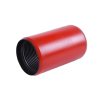- Afrikaans
- Albanian
- Amharic
- Arabic
- Armenian
- Azerbaijani
- Basque
- Belarusian
- Bengali
- Bosnian
- Bulgarian
- Catalan
- Cebuano
- Corsican
- Croatian
- Czech
- Danish
- Dutch
- English
- Esperanto
- Estonian
- Finnish
- French
- Frisian
- Galician
- Georgian
- German
- Greek
- Gujarati
- Haitian Creole
- hausa
- hawaiian
- Hebrew
- Hindi
- Miao
- Hungarian
- Icelandic
- igbo
- Indonesian
- irish
- Italian
- Japanese
- Javanese
- Kannada
- kazakh
- Khmer
- Rwandese
- Korean
- Kurdish
- Kyrgyz
- Lao
- Latin
- Latvian
- Lithuanian
- Luxembourgish
- Macedonian
- Malgashi
- Malay
- Malayalam
- Maltese
- Maori
- Marathi
- Mongolian
- Myanmar
- Nepali
- Norwegian
- Norwegian
- Occitan
- Pashto
- Persian
- Polish
- Portuguese
- Punjabi
- Romanian
- Russian
- Samoan
- Scottish Gaelic
- Serbian
- Sesotho
- Shona
- Sindhi
- Sinhala
- Slovak
- Slovenian
- Somali
- Spanish
- Sundanese
- Swahili
- Swedish
- Tagalog
- Tajik
- Tamil
- Tatar
- Telugu
- Thai
- Turkish
- Turkmen
- Ukrainian
- Urdu
- Uighur
- Uzbek
- Vietnamese
- Welsh
- Bantu
- Yiddish
- Yoruba
- Zulu
High-Quality Stainless Steel Couplings for Enhanced Durability and Performance in Various Applications
The Versatility and Benefits of Stainless Steel Couplings
Introduction
Stainless steel couplings are essential components used in various industries to connect two shafts, pipes, or hoses, facilitating the transfer of power, fluids, or gases. These couplings are designed to accommodate movement while maintaining a secure connection. Known for their durability and resistance to corrosion, stainless steel couplings are favored in applications ranging from automotive and manufacturing to plumbing and aerospace.
Types of Stainless Steel Couplings
Stainless steel couplings come in various types to cater to specific requirements. The most common types include
1. Rigid Couplings These couplings are used to connect shafts that are well-aligned and do not experience any relative motion. They provide high torque transmission and are ideal for applications where precision is crucial.
2. Flexible Couplings Unlike rigid couplings, flexible types can accommodate misalignment and shaft vibrations. They are particularly useful in applications where movement or thermal expansion occurs, such as in motor applications or conveyor systems.
3. Swivel Couplings Designed to allow free rotation between connected components, swivel couplings are commonly used in hydraulic systems. Their ability to pivot reduces stress on hoses and pipes, enhancing the overall efficiency of the system.
4. Quick Disconnect Couplings These couplings allow for easy and quick connections and disconnections, making them ideal for applications that require frequent maintenance or changes. They are often used in fluid transfer systems, automotive applications, and emergency services.
Advantages of Stainless Steel Couplings
Stainless steel couplings offer several advantages over other materials, making them a preferred choice for many applications
stainless steel coupling

1. Corrosion Resistance One of the standout features of stainless steel is its resistance to corrosion. This property is especially important in applications exposed to harsh environments, such as chemical processing or marine settings, where other materials may degrade quickly.
2. Strength and Durability Stainless steel is known for its high tensile strength, allowing it to withstand significant pressure and stress. This makes stainless steel couplings reliable under heavy loads, reducing the risk of failure.
3. Temperature Resistance Stainless steel can endure high temperatures without compromising its integrity. This property is critical in industries like oil and gas, where equipment may be exposed to extreme heat.
4. Hygienic Properties The smooth surface of stainless steel makes it easier to clean and maintain hygiene standards, which is vital in food processing, pharmaceuticals, and medical applications.
5. Aesthetic Appeal Stainless steel has a polished, sleek appearance that can enhance the overall look of machinery and systems. This aesthetic advantage is often considered in industries where visual appeal is important.
Applications
Stainless steel couplings are widely used across various fields
- Automotive In car manufacturing, these couplings connect different components within engines and transmission systems. - Manufacturing In machinery, stainless steel couplings are integral to conveyor systems and robotic arms where precision is essential. - Plumbing Used in various piping systems, stainless steel couplings ensure the secure and leak-free transportation of liquids and gases. - Aerospace The high strength-to-weight ratio and corrosion resistance of stainless steel make these couplings ideal for use in aircraft systems.
Conclusion
In conclusion, stainless steel couplings are indispensable in today’s industrial landscape. Their unique combination of durability, corrosion resistance, and versatility makes them suited for a wide range of applications. As industries continue to evolve and demand higher reliability and efficiency, the role of stainless steel couplings will become even more pivotal in ensuring the seamless operation of various systems. Investing in quality stainless steel couplings can significantly enhance the performance and longevity of equipment across numerous fields.
-
Tubing coupling plays a significant role in the chemical industryNewsApr.03,2025
-
The Importance of Tubing Crossover in Various Industrial FieldsNewsApr.03,2025
-
The characteristics and important role of Tubing Pup JointNewsApr.03,2025
-
Characteristics and functions of Pup jointNewsApr.03,2025
-
Characteristics and Functions of Pup Joint PipeNewsApr.03,2025
-
Application of Coupling Casing in Various ScenariosNewsApr.03,2025







